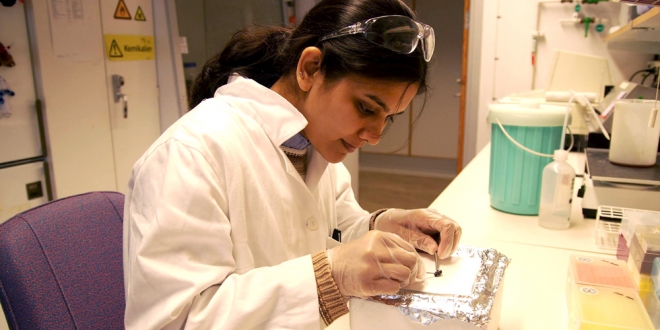A new study done by researchers at Lund University show that the pain receptors in humans and malaria mosquitos have the same sensitivity to temperature and compounds in different spices. These results may lead to a better treatment of itching and pain after a mosquito bite, as well as improved insect repellents.
Humans, as well as other organisms, have developed several receptors to avoid damaging conditions. These receptors send signals to our nerve system, which gives us a feeling of cold, heat, itching or pain. Temperature, for instance, is a trigger for this receptor.
A few years ago, the research group managed to produce a human receptor protein and successfully tested it in an artificial cell membrane. This study facilitated the new research, which showed that the results are similar when tested on a receptor of malaria mosquitos. We spoke with Professor Urban Johanson, who has been working in this research field for ten years. He says: “So in principal it is the same process. Of course, we cannot tell what the insects are feeling. One can, however, observe the avoidance behaviour, caused by the different compounds.”
What do wasabi, horseradish, cinnamon, mustard and garlic have in common then? The results by research done by Lund University, show they all have active components that stimulate this specific pain receptor, similar to how it responds to cold and heat. How? They measured the flow through ion channels with heat as well as the active components of the spices. By using spectroscopy they could measure the effect on the receptors. “The results also show that the when we removed the first part of the protein, it still worked pretty much the same as the intact protein. From this we conclude that the binding site is in the second part of the protein.”
What is the crux of the matter from these results? The knowledge can actually effectively be used in three different ways. The professor explains:
“Firstly, it could be used to develop chronic pain medication which would block the pain receptor. The second way it could be useful is in the field of forestry: one could make repellents that repel specific beetles that cause a problem for the regeneration of forest. And finally, using the proteins that stimulate the pain receptor in mosquitos, it could be adapted into an improved insect repellent.”
This is quite a competitive research field, so there are a lot of groups all over the world that are working on this type of receptors. Professor Urban Johanson explains why this specific research was possible here in Lund:
“The nice thing at Lund University is that we are able to purify the isolated protein in quite large amounts, which makes it easier to study them. The effects are directly on the protein and not via some other proteins.”
So far these results are of a basic nature, he explains. The molecular mechanism of how this process happens is not yet clear. So what’s the next step?
“Curiosity into this mechanism sparked a more detailed research, which could show us where the activating compounds are actually binding on the protein.”






